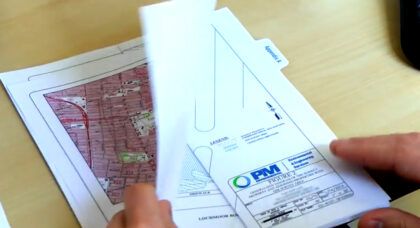Surprises Down Below: Discovering Uncontrolled Fill Can Cause Problems for Developers
Materials from demolished structures are frequently left in the basement to be built over, potentially causing problems for developers
Detroit is running the largest blight removal program of its kind in the nation, demolishing 11,052 structures since 2014. The program offers an online tracker system for transparency, and has been recognized by the US EPA as one of the safest in the country. These accolades, however, are relatively recent.
Since the population began to decline back in the 1960s, Detroit has been demolishing houses regularly, and transparency and environmental concerns were not always a priority. Detroit isn’t the only city that has suffered large-scale demolitions. From 1950 to 1980, wrecking crews brought down roughly 7.5 million dwelling units across the United States, equivalent to one out of every 17 in the country.
In some instances, demolished materials were simply bulldozed into the open basement space and covered with dirt in an effort to save money on proper removal. This uncontrolled fill presents challenges to redevelopment from an engineering standpoint, but also from an environmental one.
Shawn Shadley, Regional Manager at PM Environmental, has run into this issue on various projects in and outside of Michigan.
How frequently do you come across this issue?
Shadley: It is quite common to encounter fill materials in urban areas. In residential areas, the fill material is typically building materials from the former structure that have been pushed into the basement after demolition. While this may not represent an environmental concern, we identify this as a Business Environmental Risk (BER), as there will be a cost remove and dispose of these materials. In Grand Rapids, it is well documented that contaminated fill materials were historically deposited throughout the downtown area. Contaminants typically consist of heavy metals and polynuclear aromatic hydrocarbons (PNAs), but can also include volatile organic compounds (VOCs).
What are the environmental concerns that arise with uncontrolled fill?
Shadley: The major concern is to mitigate exposure to contamination associated with the fill materials. This can typically be achieved through the use of barriers, such as pavement and the building itself. Of other concern, in many cases the fill material is not suitable to build on and needs to be removed prior to construction, which increases construction cost. If the fill material is deemed to be hazardous, disposal costs increase substantially. Additionally, fill material may be contaminated with VOCs, which may require engineering controls, such as a vapor barrier or sub-slab depressurization system be installed to mitigate vapors from entering the building.
What other areas have issues with uncontrolled fill?
Shadley: Michigan has a long history of substantial industrial activity. In many cases, the waste products, such as foundry sands, slag, core sands, coal, cinders, and timber were utilized to fill low-lying areas along waterways. The presence of historic fill materials along waterways in urban areas is common throughout the country, and the associated contamination is often a hurdle for redevelopment. Fortunately, there are several incentives and tax abatements available by local municipalities and at the state level to offset the costs associated with redeveloping Brownfields.
The City of Muskegon developed a unique approach to characterizing the location, nature, and characteristics of historic fill material on a large, area wide basis along the Muskegon shoreline. This area has been, for several years, a target for redevelopment, in an attempt to transition the shoreline from heavy industrial use to recreational, commercial, and residential use.
What is the best way to protect a development from this problem?
Shadley: For redevelopment activities, a geotechnical investigation will usually indicate what actions will need to be taken to support the proposed structure. If the soils are not suitable for the development, then removal and disposal of the fill materials is most appropriate.
If the fill soils are contaminated from a release, additional investigation may be necessary to determine if there are any exposure pathways that remain, such as vapor intrusion. If the property is located in Michigan and the contaminated fill materials are to remain in place, a purchaser can be protected from liability for the existing contamination under Part 201 of Act 451. The purchaser needs to demonstrate that exposure to contaminants will be mitigated through engineering and/or institutional controls, often referred to as a Due Care Plan. In other states, there are programs, such as voluntary action plans, which can also minimize liability for a new purchaser of contaminated property.
This story was originally published in the Environmental Bankers Association Journal (May 2017).
Publication Details
Date
September 19, 2017



